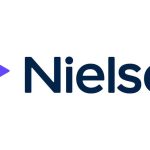In 2021, privacy will continue to be a key focus area for marketers as the digital marketing industry adapts to evolving consumer expectations. Not only are increased privacy measures important for protecting people, but they’ll also improve the long-term health of the industry.
Improving consumer privacy will require adopting new approaches to marketing measurement, which can be a challenge to keep up with as your attention shifts toward meeting your KPIs. But staying on top of the latest advancements in measurement solutions can help you better understand marketing effectiveness and may even help you meet your KPIs over the course of the year.
Here are the five pillars of a holistic marketing measurement plan that will hopefully set you up for success in 2021.
- Leverage the power of first-party data
Direct customer interactions with your business can tell you a lot about your customers’ needs and, as a result, help you make insights-driven business decisions on the road to digital marketing transformation.
For example, when you look at previous purchase history, are there products that loyal customers only tend to buy during certain times of year? Purchasing patterns can help you identify the right time to promote the right products. First-party data can also signal customers who are at risk of churning, which may prompt you to kick-start reengagement strategies.
Ask yourself: Is there a type of first-party data that I’ve never analyzed? How might analyzing that data influence future marketing decisions?
- Bring first-party data together with cross-platform tools
When you communicate with your customers across numerous platforms, connecting data and synthesizing insights can be hard. In a recent survey conducted by Forrester on behalf of Google, more than half of marketers around the world said they struggle with managing the range of data they have access to.1
Bridging siloed instances of customer behavior calls for a cross-platform analytics solution. Those who use cross-platform analytics are more likely to view their digital analytics data as complete and accurate when compared with those who don’t.2

Analytics solutions that unify insights across multiple platforms and devices can also help marketers gain a more complete view of customer journeys. Domino’s Pizza Canada, for example, uses a single analytics solution to measure customer interactions across its website and app, which allows Domino’s to see how its cross-platform campaigns are performing and how to optimize them more effectively.
Ask yourself: Am I analyzing data from different platforms in silos? If so, how can I work with my team to start investing in a cross-platform solution?
- Be transparent about data usage with your customers
Respecting customer privacy is as essential to effective digital performance measurement as using the right tools and analytics. If you explain exactly what data will be used and how it will be used when asking for customer consent, more customers will understand what they’re agreeing to. In turn, you’ll gain a better feel for the type of data usage customers are comfortable with and a greater ability to predict when you’ll have gaps in data.
Start by making sure that your privacy policies are up to date with evolving regulations that support users’ rights to control how their data is used. Next, review all related communications and revise any language that uses complicated industry terms, so customers can easily understand your policies and feel empowered to take action. Teammates who interact with customers directly may have some great ideas about how to modify language to be more in line with your customers’ communication style. For example, they might substitute words like “consent” with “it’s up to you.”
You can also update how your site manages ads and analytics cookies, so that you can continue measuring conversions while respecting user consent choices.
Ask yourself: Are my consumer-facing privacy policies clear and concise? Am I asking customers to consent to the way their data will be used? Can I gut check my policies for basic understanding, if not directly with consumers, then with colleagues who are not in marketing?
- Fill measurement gaps with modeled data
With increasing privacy regulations and cookie restrictions, the traditional ways of measuring conversions will become even more challenging, sometimes leading to gaps in the customer journey.
Conversion modeling helps bridge these gaps in an automated and privacy-first way. Powered by machine learning, modeling can fill in the blanks in a customer’s path to conversion, such as one that spans multiple devices, to quantify the full impact of your marketing efforts. Consider creating a stronger foundation for model quality by using sitewide tags to measure the full customer journey.
Ask yourself: Are measurement gaps leaving me with blank spots in my customers’ journeys? How might I demonstrate to my team that filling these gaps through conversion modeling will lead to a better customer experience?
- Predict customer behavior with a secure cloud-based solution
Today people expect more personalized and helpful experiences when they engage with your brand.
To meet these expectations, digitally mature marketers are bringing their first-party data together in a cloud solution. A recent study that Boston Consulting Group conducted in the Asia Pacific region, for example, found that all the mature brands reported using a cloud solution.
With all your data in one centralized location, you’ll be able to make more informed business decisions, thanks to timely access to data and automation of customer analysis. You’ll also be able to use machine learning to unlock advanced insights, such as purchase probability predictions and customer lifetime value, all while keeping your site’s customer data more secure.
Digitally mature marketers are bringing their first-party data together in a cloud solution.
Your company may work with external partners to measure digital campaigns and the customer journey, and these partners likely add third-party tags to your website. One large improvement in data security is achieved by moving these third-party tags from your website to a cloud solution. Once in the cloud, third-party tags no longer have access to the information customers enter on your site, giving you more control over who has access to customer data.
Ask yourself: What is one benefit a cloud-based solution could offer my company? Can I use this benefit to start the conversation about switching to a cloud-based solution?
Prepare for an evolving landscape
By prioritizing and investing in measurement infrastructure, businesses can set themselves up for success in the long run. With the right preparation, marketers can continue to effectively measure their digital campaigns and unlock even more insights than before, all while providing a smooth, privacy-forward, and empowered experience for their users.
Author: Karen Stocks, Managing Director, Global Measurement Solutions, Google
Source: thinkwithgoogle.com
MARKETING Magazine is not responsible for the content of external sites.
An afternoon of conversations we never had, with leaders most of you never met.
Discover what’s possible from those who made it possible. Plus a preview of The HAM Agency Rankings REPORT 2024.
Limited seats: [email protected]
BOOK SEATS NOW









